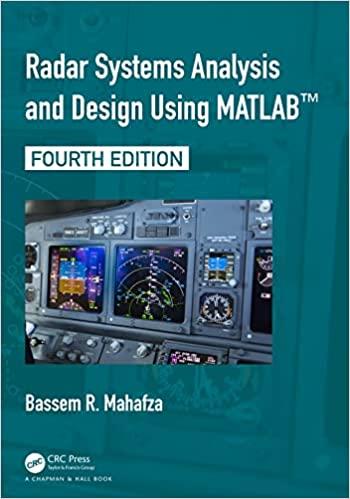Repeat the previous problem when there is (0.1 mathrm{~dB} / mathrm{km}) atmospheric attenuation. Data From Problem 3.20
Question:
Repeat the previous problem when there is \(0.1 \mathrm{~dB} / \mathrm{km}\) atmospheric attenuation.
Data From Problem 3.20
An X-band airborne radar transmitter and an air-to-air missile receiver act as a bistatic radar system. The transmitter guides the missile toward its target by continuously illuminating the target with a CW signal. The transmitter has the following specifications: peak power \(P_{t}=4 \mathrm{~kW}\); antenna gain \(G_{t}=25 \mathrm{~dB}\); operating frequency \(f_{0}=9.5 \mathrm{GHz}\). The missile receiver has the following characteristics: aperture \(A_{r}=0.01 \mathrm{~m}^{2}\); bandwidth \(B=750 \mathrm{~Hz}\); noise figure \(F=7 \mathrm{~dB}\); and losses \(L_{r}=2 \mathrm{~dB}\). Assume that the bistatic RCS is \(\sigma_{\mathrm{B}}=3 \mathrm{~m}^{2}\). Assume \(R_{r}=35 \mathrm{~km} ; R_{t}=17 \mathrm{~km}\). Compute the \(S N R\) at the missile.
Step by Step Answer:

Radar Systems Analysis And Design Using MATLAB
ISBN: 9780367507930
4th Edition
Authors: Bassem R. Mahafza






